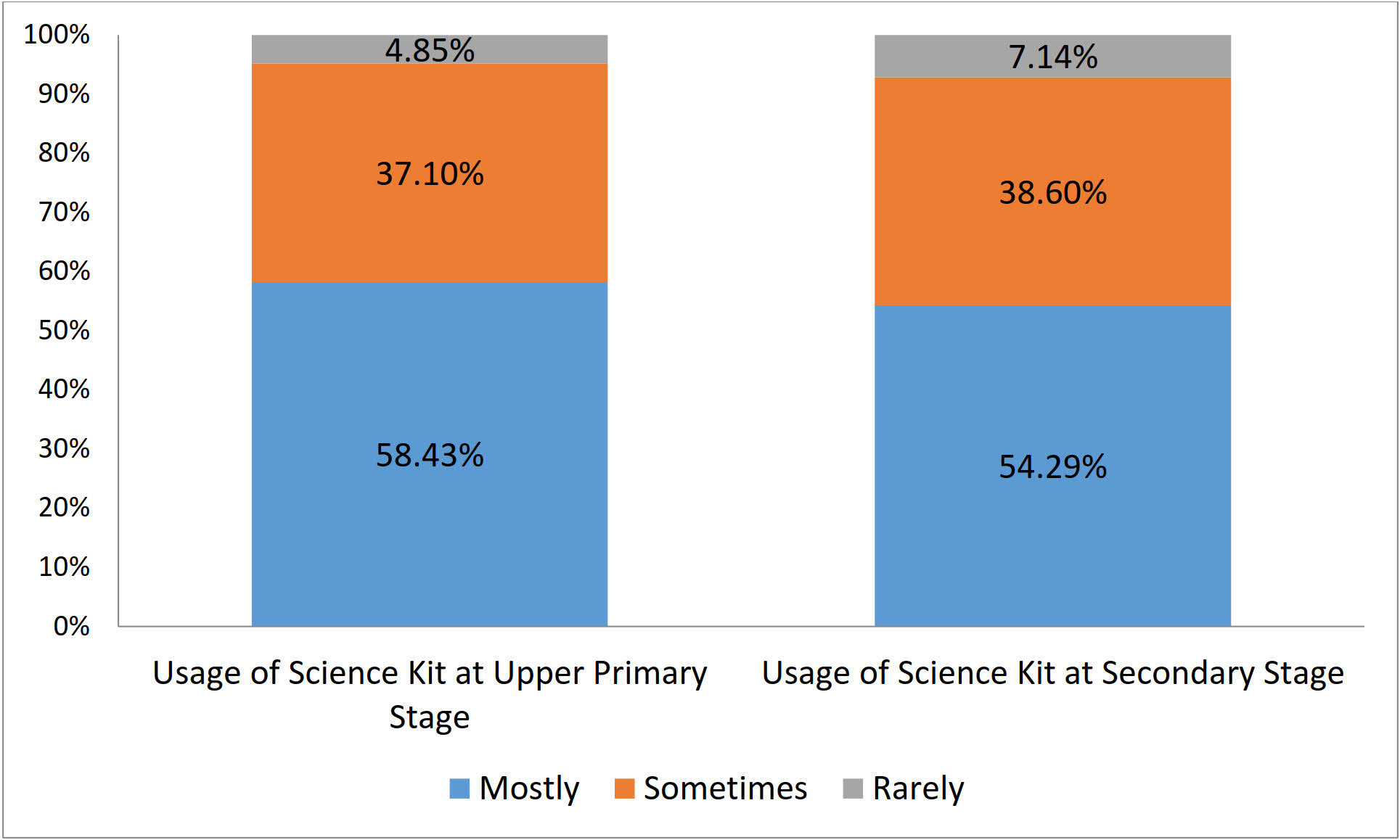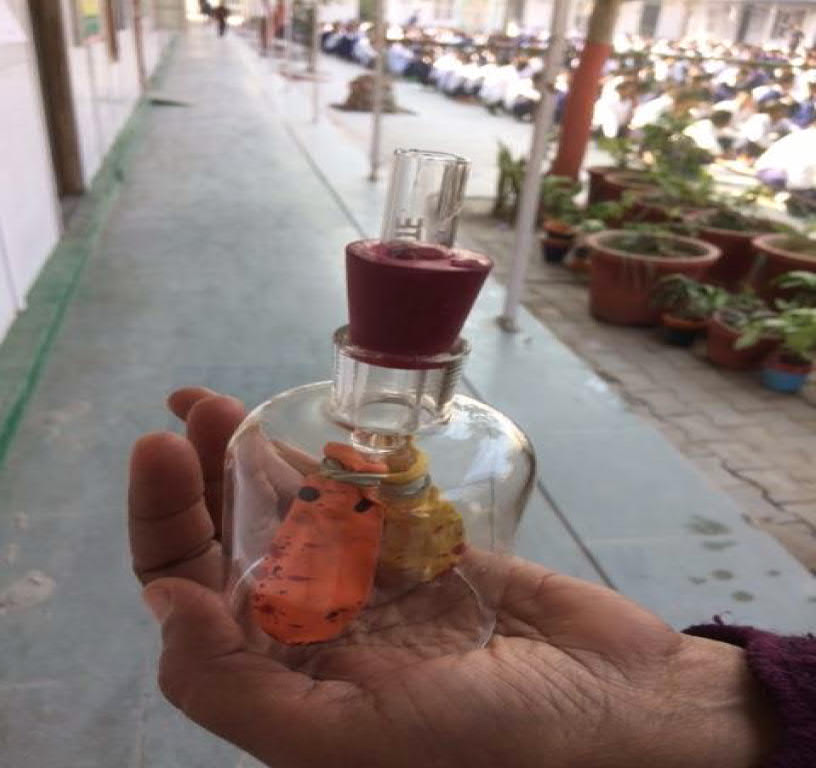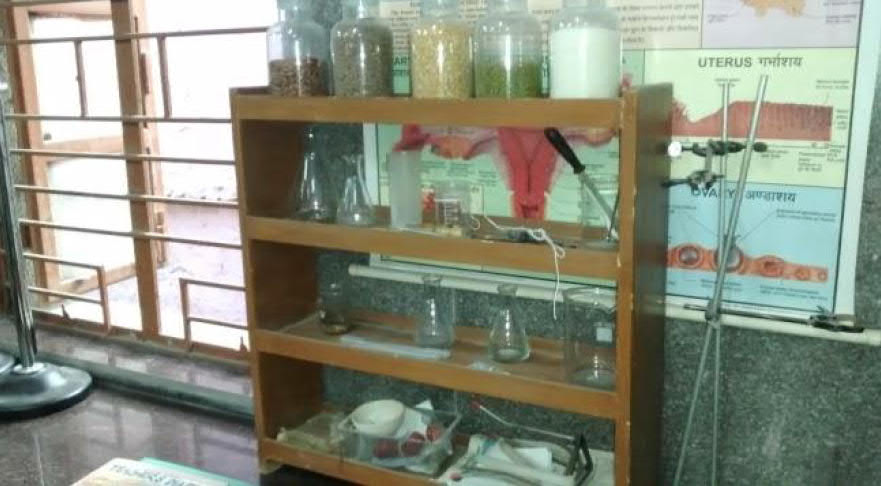Asia-Pacific Forum on Science Learning and Teaching, Volume 19, Issue 2, Article 6 (Dec., 2018) |
Research Question-1: Are the kits available in schools?
At least one science kit each at upper primary and secondary stage is available in each school. The science kits are available in schools from last 6 months to 4 years. Majority of the teachers are satisfied with the number of kits available in the schools. At upper primary stage, 61.80% teachers are satisfied with one kit because some schools have laboratories also.38.20% teachers desired to have more number of kits because of the large number of students. Since one kit is too less to give hands-on experience to students and ultimately these teachers land up by demonstrating the activities. Similarly at secondary stage, 75.71%teachers are comfortable with the number of science kits available, while 24.29% teachers suggested having at least 4 to 6 science kits in each school.
Provision for replenishment and maintenance of these kit items is usually done from the funds allocated under Rashtriya Madhyamik Shiksha Abhiyan (RMSA) or from school funds given to science department or science clubs etc.
This information has been revealed from question numbers10, 11, 12, and 15.
Research Question-2: To what extent these kits are being utilized?
Some of the teachers could utilize the science kit items appropriately at both the stages; however, some were facing difficulty because of lack of training. In most of schools, it was found that training was provided to one or two teachers only of each school, due to which teachers were finding difficulty in using most of the kit items (from question 6). Data shows at upper primary stage 39.33% teachers have attended training programs and more than half i.e 60.67% teachers never got opportunity to attend any training programme on usage of science kit.
Figure 2: Training attended by teachers at upper primary and secondary stages
Similarly at secondary stage also 42.86% teachers have been trained through the programmes conducted under Sarva Shiksha Abhiyan (SSA) or Rashtriya Madhyamik Shiksha Abhiyan (RMSA) or by State Council of Educational Research and Training (SCERT) or District Institute of Education and Training (DIET) for 4-5 days. More than half i.e 57.14% teachers never got any opportunity to attend any training programme [Figure 2]. Analysis of data (from questions 7 and 8) also confirms that less than 50% teachers were trained in using these kits. They were trained one time when kits were arrived at school. Usually one teacher is trained from each school as master trainer and it is expected that this master trainer will train rest of the teachers of that school. It is also expected that if new teacher joins the school, she should be trained by the master trainer. Since these teachers couldn't get any support either from any master trainer or from any mentor and that is why they face difficulty in using science kits.
The data shows nearly 60% of teachers use science kits for demonstration during teaching –learning process [Figure 3]. Some of them also provide opportunities to students for hands- on activities for the topics related to light, magnets, chemical reactions, pH etc.
Figure3: Demonstrating activity using kit items
At upper primary stage 70% teachers are unable to give hand-on experience to students because of high strength of students in class. The maximum numbers of students reported in one section are between 70 to110. At secondary stage, due to the availability of laboratory [Figure 4], science kit is used only when experiment is being demonstrated by the teacher as and when required.
Figure 4: Glimpses of science laboratory in school at secondary stage
In figure 5, Data shows that at upper primary stage 58.43% teachers mostly use science kit, 37.10% teachers sometimes and 4.58% of them rarely. At secondary stage 54.29% teachers use mostly, 38.60% sometimes and 7.14% rarely because of availability of laboratories .In laboratory each student get opportunity to work independently. From this data one can analyze that the teachers want to utilize the science kit during teaching-learning process.

Figure 5: Usage of science kits
The data shows (from question 17) that teachers face difficulty in recognizing and naming the kit items. Some teachers are not even aware about the use of these kit items (the pictures of kit items of upper primary stage and secondary stages are given in the Tool).This indicates that teachers need proper training on how to use kit items which are provided in the science kits. The kit items which teachers find convenient to use are-bell jar, beakers, test tubes, lenses, mirrors, clamp stand, Newton's disc etc. (from question 18).The kit items which teachers find difficult to use are - rheostat, dissecting microscope, electroscope assembly, generator, W-tube, multimeter (from question number 9 and 19). These items are provided in the kits of both upper primary and secondary stages. Teachers reported that all the activities are feasible at upper primary stage but at secondary stage it is difficult to perform ohm's law activity (from question number 23), because students find difficulty in making circuit.
In most of the schools teachers claimed that kits are being used during teaching-learning process, however, the visits in schools and on analyzing data, it shows that kits were not being utilized to the extent these should be.
Research Question-3: Is there any difficulty faced by users while using the kits and modification(s), if any, suggested for the kit items?
Due to the large number of students in each class, teachers face difficulty in demonstrating the activities and also providing hands-on to each student. In each section minimum number of students is 40 and maximum number is 125.Since more than 50% teachers are not trained in using these kits; they face difficulty in handling deflagrating spoon, generator, electroscope, magnesium ribbon, etc. It was also shared by all that they find difficult in placing items back in the kit, may be due to size of the kit and lack of availability of space. Nearly 20% teachers suggested that the heating device, microscope and slinky does not work properly after being used two/three times and also instead of stove, spirit lamp may be provided.
Spring balance less than 250 least count, solar panel related material should be added to the kit items and also more quantity of the chemicals should be provided. 10% teachers also suggested that diode, mirrors, lenses, prism and Newton's disc may be provided more in number so that each student can be given hands-on. They also desired that the manuals should be provided in the science kit box and not separately.
Nearly 60% teachers suggested that glass items may be replaced by plastic items particularly for visually impaired students. Where ever possible teachers mostly demonstrate activities to these children. Teachers have demanded for improvisation of kit items so that hands-on experience can be given to these students (from question number 5, 6, 10, 12, 17, 19, 21, 23, 24, 25, 26). For example, glass items to be replaced by plastic items, improvised apparatus and audio material to be provided for visually impaired students etc.



